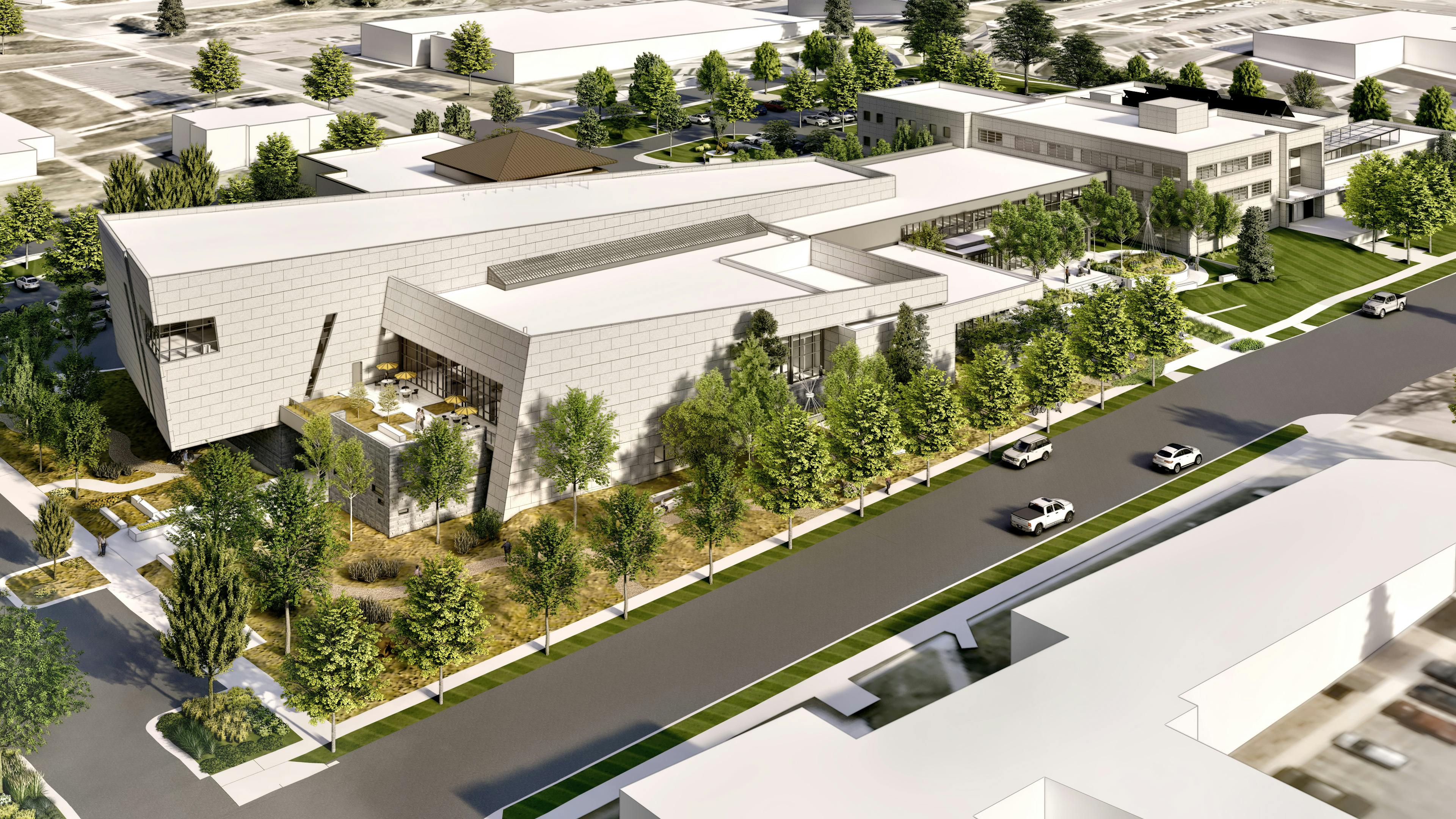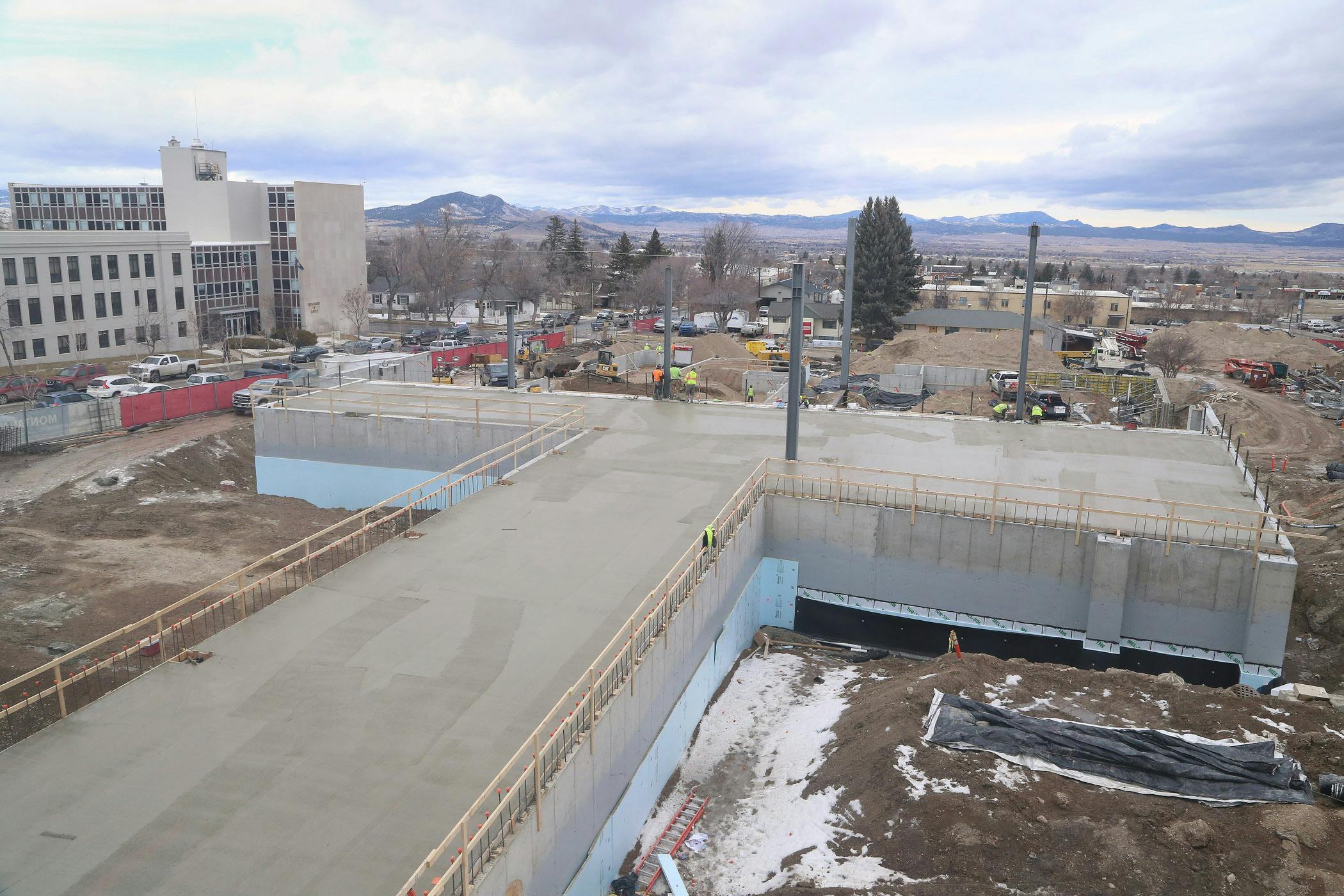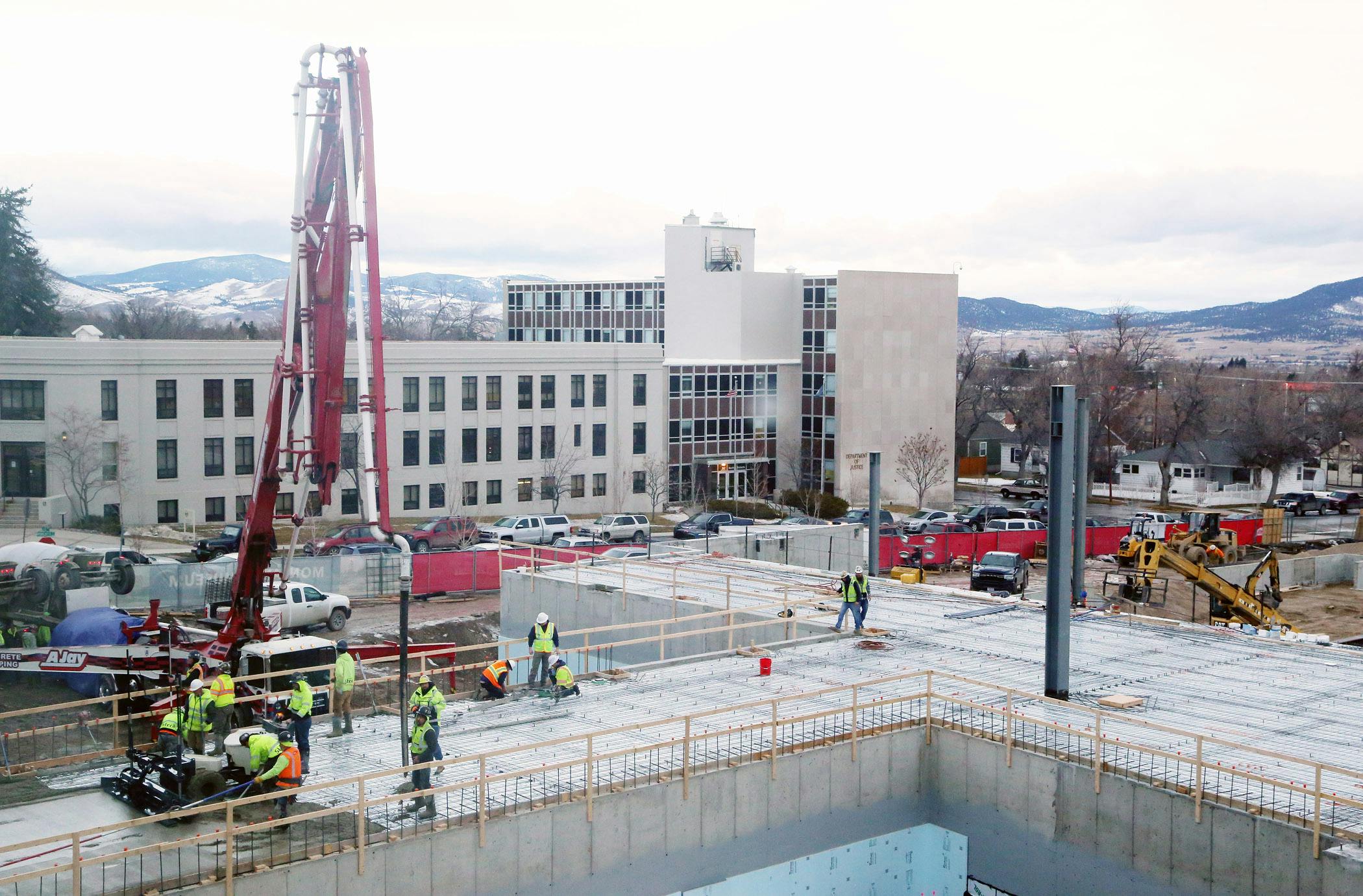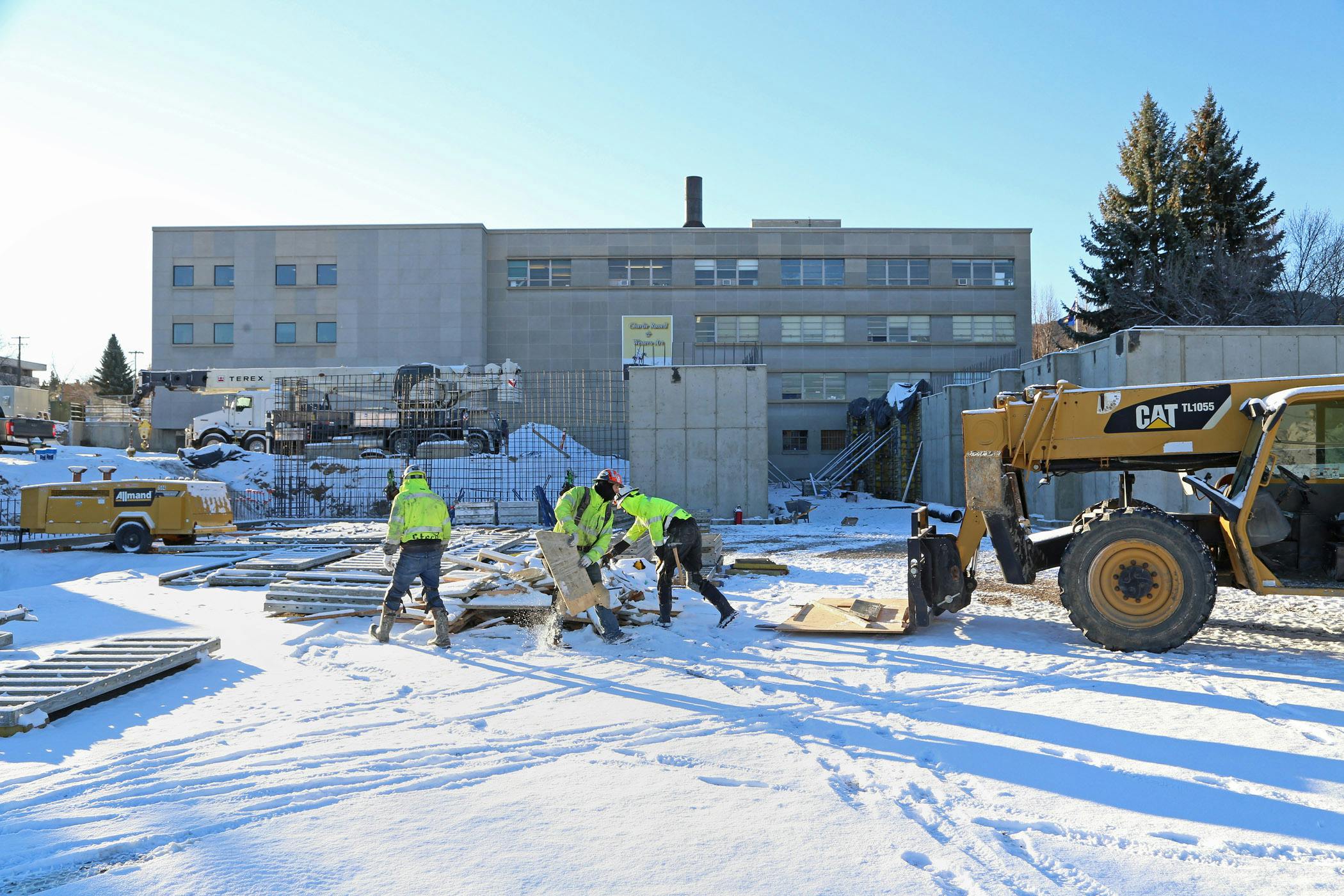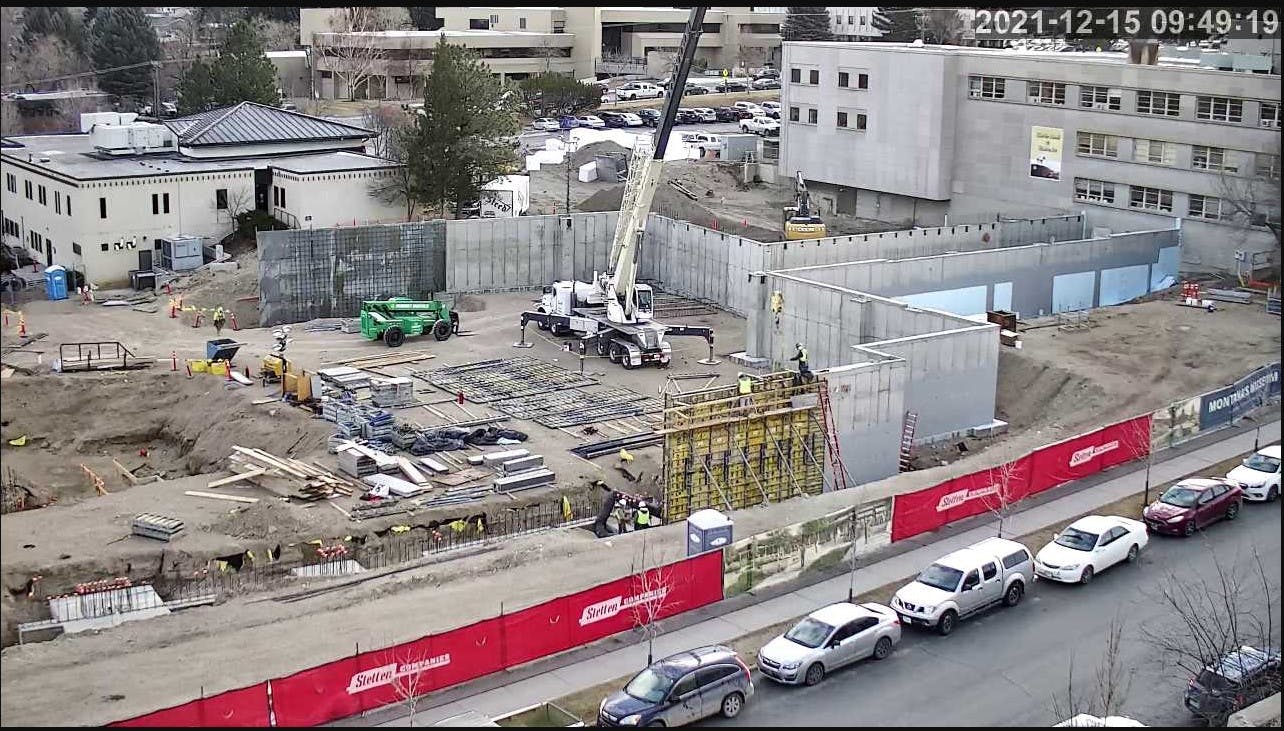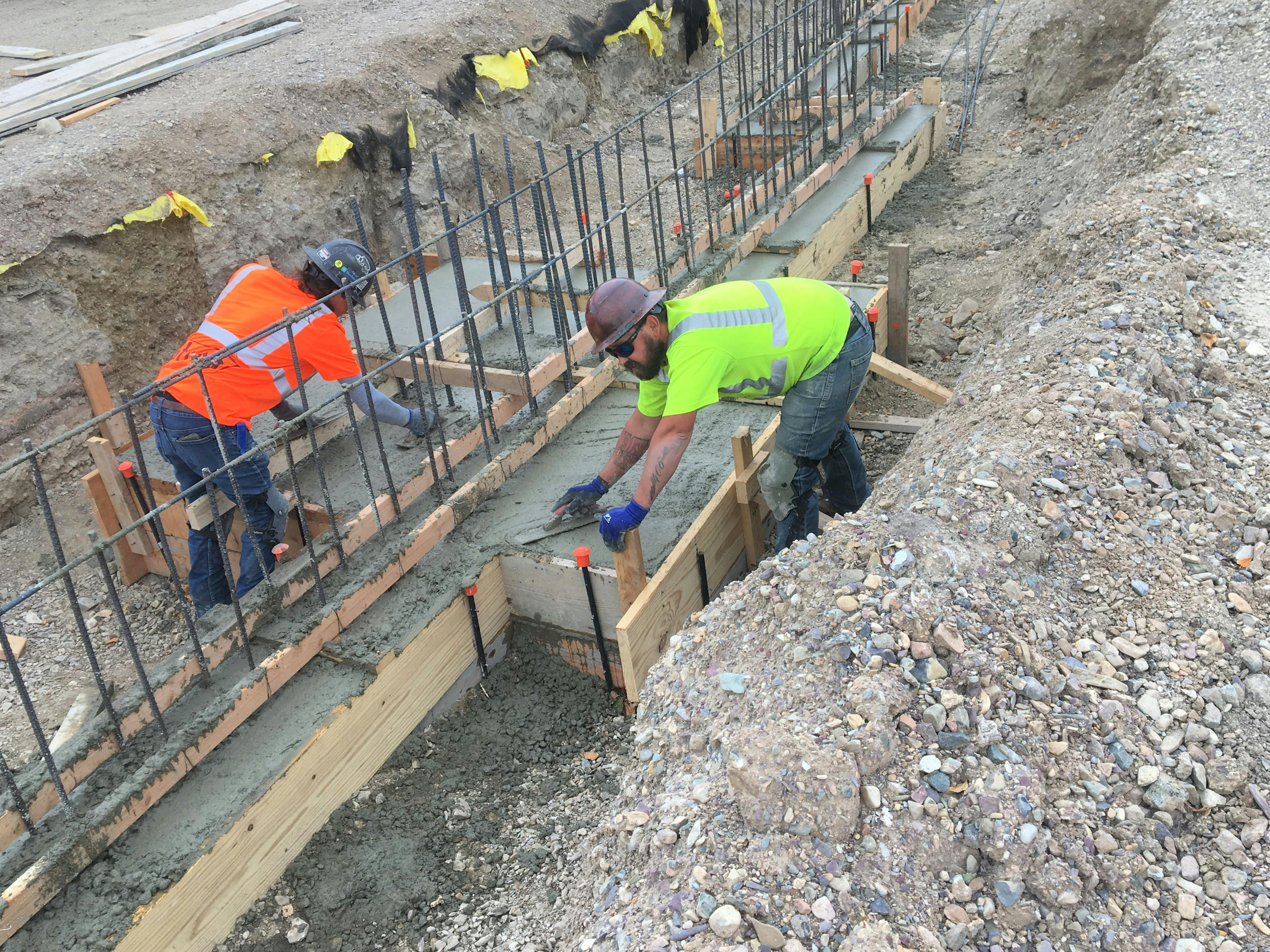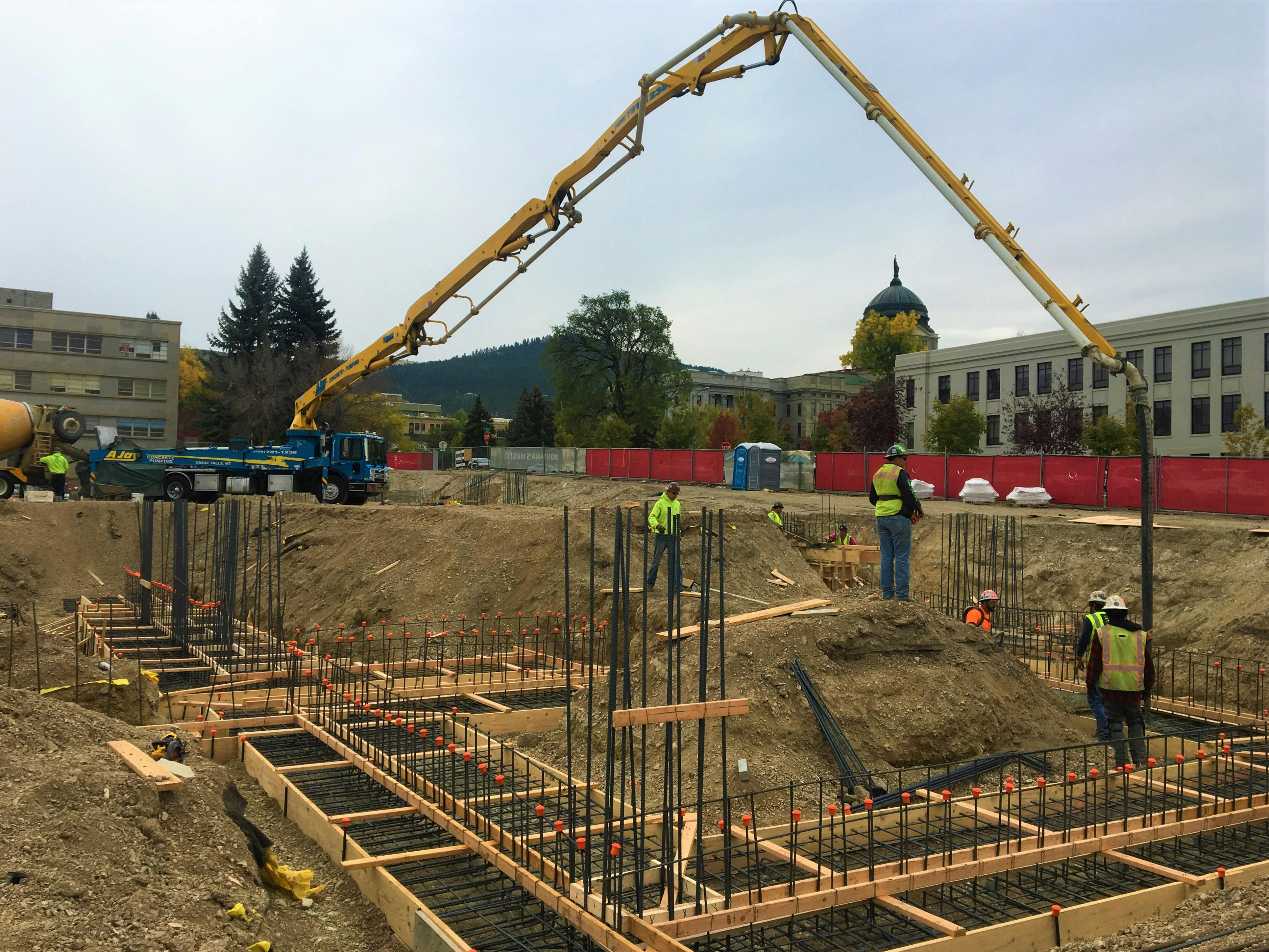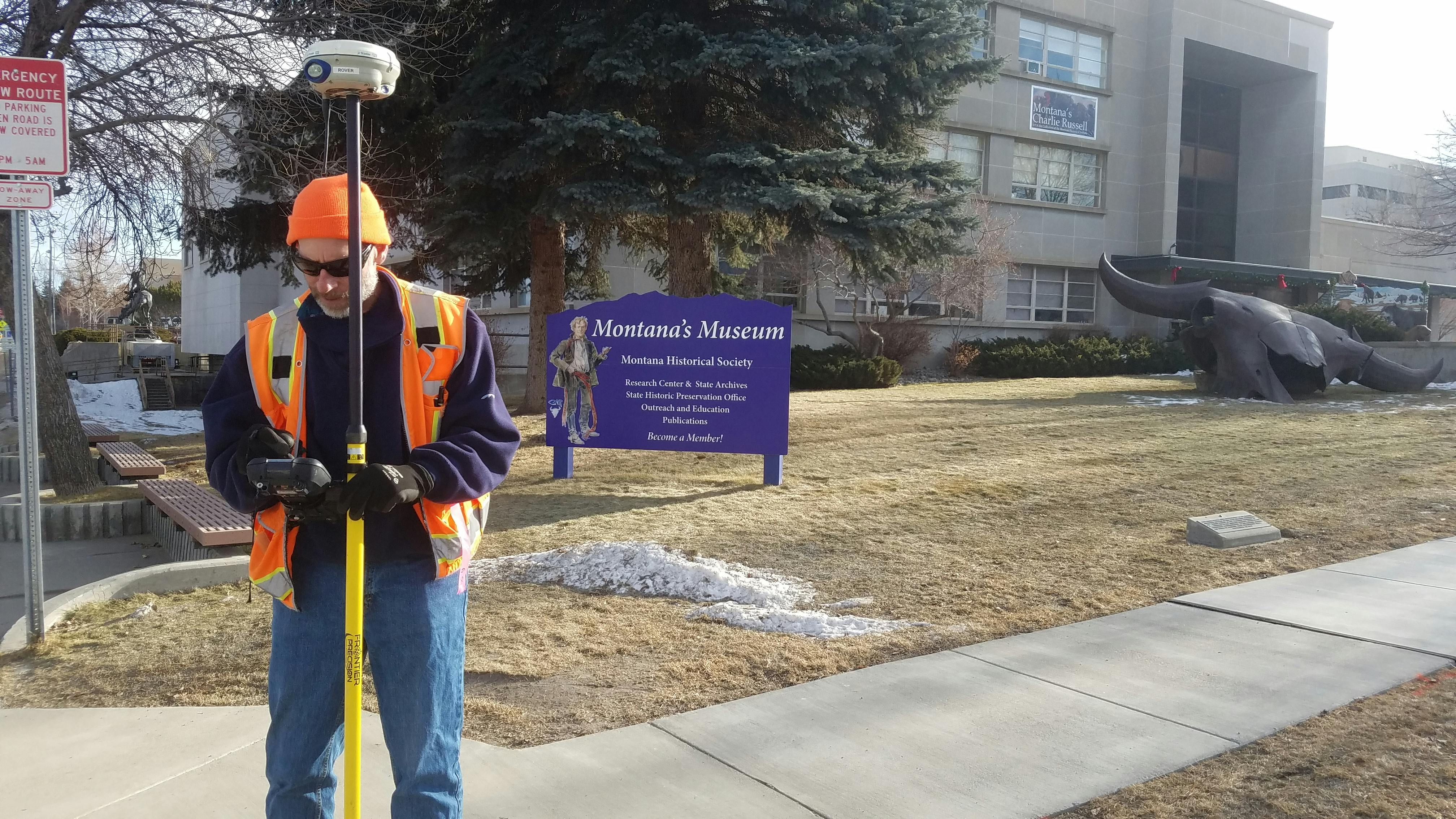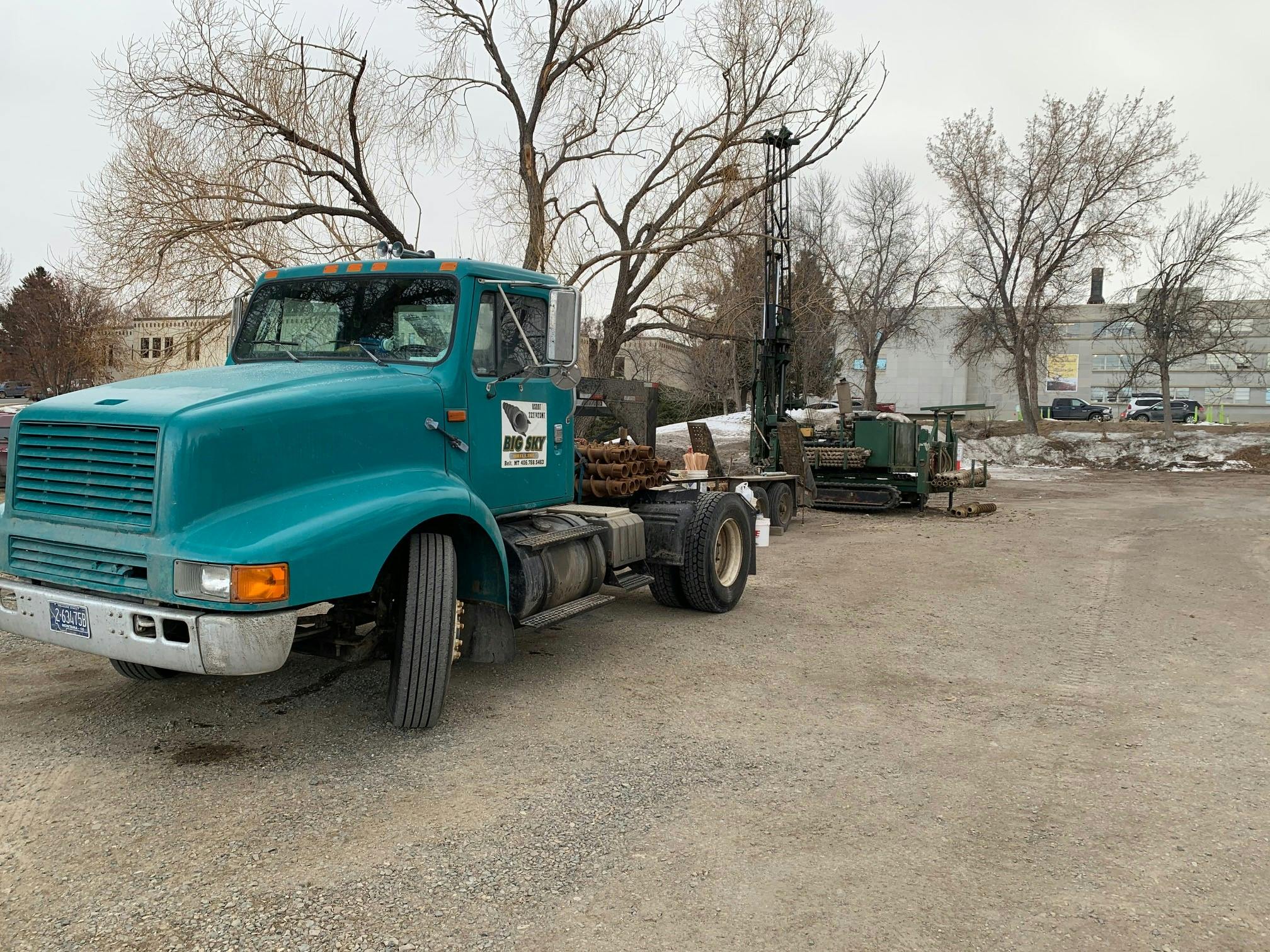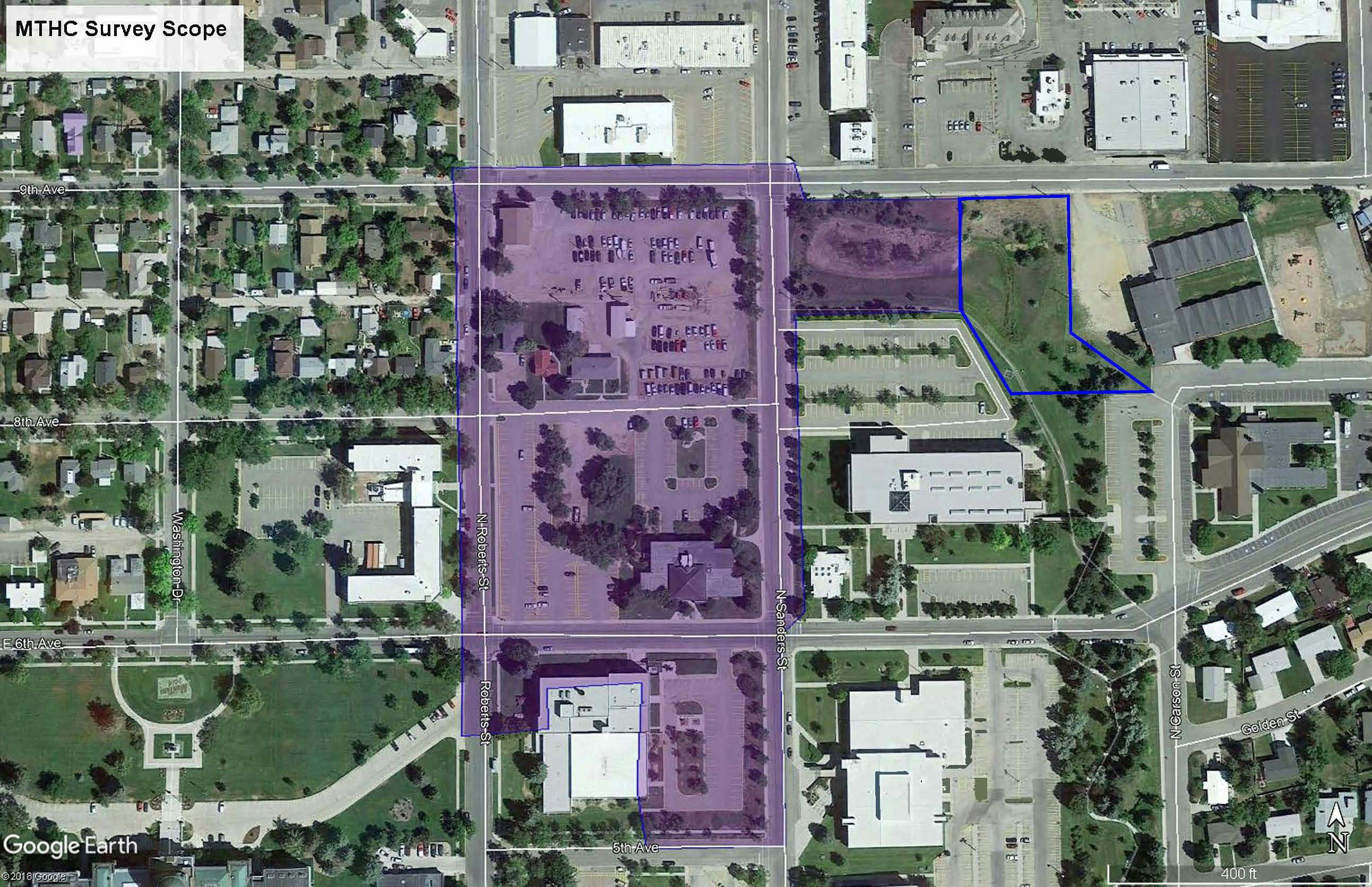Design
Before this project could be designed, the site was selected. Learn about the selection process here. Once the site was selected, the building was designed and now the teams are finalizing the interpretive design for the galleries, public spaces, and landscaping features. We welcome your involvement and participation! Below is an overview of the Montana Heritage Center campus.
Exterior Spaces



From inside to out, the Montana Heritage Center reflects the intersection between people and the landscapes. Every element has been carefully chosen to immerse the visitor in the place we call Montana.
Interior Spaces


Montana Homeland Gallery



MORE ABOUT THE DESIGN PHASE
A preliminary concept for the Montana Heritage Center was developed in 2010, but the design process was restarted in 2020 not only to update the concept, but also to incorporate new directives and priorities. The Building Committee was created to determine the structure, design, and look of the new Heritage Center. Scroll down to learn more about the Building Committee, the Steering Committee, and the committee structures.
Committee members were directed to aspire to the highest standards of efficiency and sustainability for the design. This is the first building constructed on the Capitol campus since 1984.
Cushing Terrell is the architectural firm chosen to design the expansion as well as the renovation of the existing building. Detailed plans are being finalized. Learn more about Cushing Terrell here.
More than a decade in the making, this expansion and renovation project is a state-of-the-art repository for Montana’s historic collections and resources. When construction is completed, it will nearly double the size of the current Montana Historical Society facility, with 66,000 square feet of new space, plus exterior and interior renovations. The Cushing Terrell design melds new with the historic building, using the space between the two structures to create a dramatic entry to connect the buildings.
Taking inspiration from the state’s geology, the addition symbolically references the Lewis Overthrust, the geophysical collision of tectonic plates that drove one plate over another and helped define Montana’s landscape. The design concept for the Montana Heritage Center is meant to convey the feeling that nature is a driving force behind why people live in the Treasure State. Built of the same sandstone as the adjacent historic structure, the new building features subtle patterning incised into the rock.
The landscape design continues the sense of exploration, with features and plantings that mimic (on a micro scale) the journey from the plains and grasslands to the foothills and forests, and finally to mountain landscapes. Linking it is a river-like trail that flows from one ecosystem to the next.
With a commitment to sustainability and creating healthy spaces, the project is pursuing both USGBC LEED and IWBI WELL certifications, and is anticipated to be complete in early 2025.
Listen to Cushing Terrell architects describe the inspiration behind the architectural design:
Before this project could be designed, the site was selected. Learn about the selection process here. Once the site was selected, the building was designed and now the teams are finalizing the interpretive design for the galleries, public spaces, and landscaping features. We welcome your involvement and participation! Below is an overview of the Montana Heritage Center campus.
Exterior Spaces



From inside to out, the Montana Heritage Center reflects the intersection between people and the landscapes. Every element has been carefully chosen to immerse the visitor in the place we call Montana.
Interior Spaces


Montana Homeland Gallery



MORE ABOUT THE DESIGN PHASE
A preliminary concept for the Montana Heritage Center was developed in 2010, but the design process was restarted in 2020 not only to update the concept, but also to incorporate new directives and priorities. The Building Committee was created to determine the structure, design, and look of the new Heritage Center. Scroll down to learn more about the Building Committee, the Steering Committee, and the committee structures.
Committee members were directed to aspire to the highest standards of efficiency and sustainability for the design. This is the first building constructed on the Capitol campus since 1984.
Cushing Terrell is the architectural firm chosen to design the expansion as well as the renovation of the existing building. Detailed plans are being finalized. Learn more about Cushing Terrell here.
More than a decade in the making, this expansion and renovation project is a state-of-the-art repository for Montana’s historic collections and resources. When construction is completed, it will nearly double the size of the current Montana Historical Society facility, with 66,000 square feet of new space, plus exterior and interior renovations. The Cushing Terrell design melds new with the historic building, using the space between the two structures to create a dramatic entry to connect the buildings.
Taking inspiration from the state’s geology, the addition symbolically references the Lewis Overthrust, the geophysical collision of tectonic plates that drove one plate over another and helped define Montana’s landscape. The design concept for the Montana Heritage Center is meant to convey the feeling that nature is a driving force behind why people live in the Treasure State. Built of the same sandstone as the adjacent historic structure, the new building features subtle patterning incised into the rock.
The landscape design continues the sense of exploration, with features and plantings that mimic (on a micro scale) the journey from the plains and grasslands to the foothills and forests, and finally to mountain landscapes. Linking it is a river-like trail that flows from one ecosystem to the next.
With a commitment to sustainability and creating healthy spaces, the project is pursuing both USGBC LEED and IWBI WELL certifications, and is anticipated to be complete in early 2025.
Listen to Cushing Terrell architects describe the inspiration behind the architectural design:
-
Nominations Sought for Montana History Teacher of the Year
Share Nominations Sought for Montana History Teacher of the Year on Facebook Share Nominations Sought for Montana History Teacher of the Year on Twitter Share Nominations Sought for Montana History Teacher of the Year on Linkedin Email Nominations Sought for Montana History Teacher of the Year link
Nominations are being accepted for seventh- through twelfth-grade teachers who have done an exemplary job teaching Montana history during the 2021-2022 school year.
The winner will receive the 33rd Montana Statehood Centennial Bell Award, which honors the Montana History Teacher of the Year. The winner and his or her class will be honored at a ceremony in the State Capitol on Wednesday, Nov. 9, 2022. Prizes include a plaque and a $4,500 cash award to be used for classroom materials, field trips, speakers, and anything else that enhances learning in their classroom.
In even numbered years the award is given to a teacher at the seventh- through twelfth-grade level. In odd numbered years it is given to a teacher at the fourth- through sixth-grade level.
Email nominations to Norma Ashby Smith, award coordinator, at ashby7@charter.net. The nominations often come from principals, superintendents, fellow teachers, or librarians from public and private schools. The nominations should include the nominator’s name, school, address, phone number and email, as well as the teacher’s name, grade, school, address, phone number and email. The deadline for nominations is March 31, 2022.
Nominated teachers will be asked to submit two letters of support. One can be from their principal, superintendent, fellow teacher, or librarian, and one from a student. Nominated teachers also should submit a one-page letter detailing why they enjoy teaching Montana history, including how they adapted teaching Montana history during the COVID-19 lockdowns; how they engage their students in learning; how their Montana history course recognizes cultural diversity; and anything else they’d like to share about their class or methods.
Nominees will receive instructions on how to submit this material, with a deadline of May 1, 2022.
This program is sponsored by the Montana Television Network, the Montana History Foundation, and the Sons & Daughters of Montana Pioneers in cooperation with the Montana Historical Society and the 1889 Coffee House in Helena. A gift of $100 in gold Sacajawea dollars is given to the student who writes the letter of support for the winning teacher from Judy Wohlfrom of Woodland, California. In addition, one gold Sacajawea dollar is given to each student who accompanies the winning teacher to the Nov. 9 ceremony from Mike Collins, president of the Sons & Daughters of Montana Pioneers and his wife Connie of Helena.
Contact Norma Ashby Smith with any questions about the award or the nomination process at 406/453-7078 or at ashby7@charter.net.
-
Three Montana Sites Nominated to Historic Register
Share Three Montana Sites Nominated to Historic Register on Facebook Share Three Montana Sites Nominated to Historic Register on Twitter Share Three Montana Sites Nominated to Historic Register on Linkedin Email Three Montana Sites Nominated to Historic Register link
A bank in Billings, a block in Malta, and a flight strip west of Dell are the newest nominations proposed for listing in the National Register of Historic Places.
The Montana National Bank at the intersection of Broadway and Second Avenue North in downtown Billings is one of the city’s most recognized buildings.
The original Neoclassical Revival portion of the building was constructed in 1918 and designed by Omaha-based architect George B. Prinz. The building functioned as a financial center for nearly 60 years and played a key role in the growth of commerce and culture in the city.
Terra cotta elements emphasize the stylistic features on the three-story building, which includes a full-height monumental entry set off by slender columns, with scroll-shaped ornaments on the top, and an elaborate, tooth-like cornice. In 1952, the building was remodeled, and expanded with an “International” style addition constructed off its east wall.
“It’s an interesting melding of classical and modern elements,” said John Boughton, National Register coordinator at the Montana State Historic Preservation Office. “Yet the bank building easily continues to convey its historic and architectural significance.”
The Montana National Bank organized in 1912 and initially catered to cattle and sheep ranchers. Everything about the Montana National Bank building exuded strength, permanence, and optimism. Envisioned by the directors as a rock in the commercial district, it successfully fulfilled that role for nearly 60 years.
The Montana National Bank held an essential role in the City of Billings as the first prominent center of the community’s banking industry, agriculture, and later oil, gas, and coal development. From comfortable chairs in the customer waiting lounge to the ease of making deposits, obtaining loans, and other services, the Montana National Bank was, indeed, the “Bank for You,” a motto it promoted for most of its existence.
The bank changed its name in 1955 to First National Bank, and it continued to grow into the 1970s. By 1976, the bank had outgrown its old quarters and moved to a new 14-story building at the corner of Second Avenue. In 1977, it became First Northwestern National Bank, an affiliate of the Northwest Bancorporation.
Big Sky Economic Development currently is renovating the bank’s interior. Boughton notes that despite some recent renovations that removed remodel configurations and finishes, the lofty ceiling and perfect lighting still make for a grand entrance.
Edwards and McLellan Block
Northeast of Billings along the Hi-Line, the Edwards and McLellan Block in Malta consists of two commercial block brick buildings constructed by Lee Edwards and William McLellan in 1910. Family members owned the building until 1975, and while the business no longer is called Edwards & McLellan, the building operates much today as it did historically.
“The interior arrangement consisted of individual office space confined to the upper floor with the lower story dedicated to the operation of the mercantile,” Boughton said. “Through the years, upper story office space was rented to dentists, engineering and surveying companies, the Moore Telephone Company, investment firms, and attorneys. A similar strategy exists today, though instead of individual offices occupying the upper story, the rooms have been converted to lodging, with nearly all retaining their historic space and dimensions.”
Dell Flight Strip
Finally, in the southwest corner of Montana on a flat stretch of land west of Dell, is a 1943 flight strip. Constructed under the direction of the Montana Highway Department, the Dell Flight Strip dates to the United States’ entry into World War II.
At that time, the U.S. Army Air Force established satellite airfields in western states, as well as intermediate landing strips for emergencies while B-17 bomber crews were training. The Flying Fortresses required a minimum of 4,400 feet for take offs and landings.
The Dell Flight Strip nomination involves 16 features, including a 51-foot-tall revolving airport beacon, electrical shed, hangars, tie-downs, a jet fuel station, and a 1930s-era “privy,” complete with a crescent moon on the front and back gables. The runway is about 7,000 feet long by 75 feet wide.
“These flight strips were also intended for emergency use for the Women’s Airforce Service Pilots (WASP) who ferried American bombers destined for the Soviet Union to East Base in Great Falls,” Jon Axline, a Montana Department of Transportation historian wrote in the nomination form. He added that there’s no record of any Flying Fortresses landing at the airstrip, but other pilots have used it both for emergency landings; as a base for search and rescue operations; by crop dusters; and as a location for aircraft instructional classes.
“In the late 1940s and early 1950s, the flight strip provided the impetus for the construction of the Dell Airport Bar, a popular meeting place for dancing and other social events,” Axline noted, adding that the flight strip still sees about 950 take offs and landings each year.
-
MHS Seeks Heritage Keeper Nominations
Share MHS Seeks Heritage Keeper Nominations on Facebook Share MHS Seeks Heritage Keeper Nominations on Twitter Share MHS Seeks Heritage Keeper Nominations on Linkedin Email MHS Seeks Heritage Keeper Nominations link
The Montana Historical Society is seeking nominations for people and organizations whose exemplary commitment to identifying and preserving our historical and cultural heritage makes them eligible for the Heritage Keeper Awards.
Up to three people or organizations will be honored by the MHS Board of Trustees for the Heritage Keeper Awards. An additional award, The Montana Heritage Guardian Award, given out only on special merit, recognizes the accomplishments of one of the Heritage Keeper Award nominees with a record of outstanding accomplishments.
To qualify, the individual must be alive, and organizations must be currently active. The nominee must have demonstrated a commitment to a significant Montana history project or have identified and preserved objects or property of significance to Montana’s history and culture.
Organizations also must have a record of preserving and promoting Montana’s historical and cultural heritage.
All nominees must show a commitment to Montana’s historical and cultural preservation beyond the requirements of professional employment, or an organization’s specific goals and objectives. Evaluations will focus on the significance and impact of the overall work in enhancing, promoting, and stimulating general public interest in a specific aspect of Montana history and culture.
Areas of interest can include historic building and landscape preservation; sustained historical and cultural research and publication; fine art history and preservation; and efforts to promote and educate future generations on the historical and cultural legacy of all Montanans.
The nomination deadline is April 1, 2020. The nomination form and additional information can be found online at mhs.mt.gov by pulling down the menu under the “About” tab, then following the link from the "Board of Trustees” page. Nominations may be resubmitted on an annual basis if the person or organization didn’t previously receive a Heritage Keeper award.
Nominations or questions can be emailed to Jodel Fohn at jfohn@mt.gov, or mailed to Heritage Keeper Awards Chair, Montana Historical Society, P.O. Box 201201, Helena, MT 59620-1201. The forms also can be dropped off at the MHS office at 225 North Roberts in Helena.
The awards will be presented by the MHS Board of Trustees at a time and date to be decided.
-
Substantial Gifts Add a Half-Million Dollars to MHC Fundraising Effort
Share Substantial Gifts Add a Half-Million Dollars to MHC Fundraising Effort on Facebook Share Substantial Gifts Add a Half-Million Dollars to MHC Fundraising Effort on Twitter Share Substantial Gifts Add a Half-Million Dollars to MHC Fundraising Effort on Linkedin Email Substantial Gifts Add a Half-Million Dollars to MHC Fundraising Effort link
Five recent substantial gifts totaling $525,000 are helping the Montana Historical Society reach its private fundraising goal for construction of the Montana Heritage Center and updates to the existing MHS building.
Bruce Ennis and Maggie Davis of Kalispell made a significant donation recently, after meeting with MHS Director Molly Kruckenberg and Development Officer Ginny Sullivan. Both Ennis and Davis are well-versed in historical society activities and challenges; Ennis formerly sat on the MHS Board of Trustees for nine years, and Davis previously volunteered as a docent at MHS.
“In about 400 years the human experience in what is now Montana changed dramatically,” Davis said. “From the introduction of the horse to today’s legislature, the Society has preserved artifacts, documents, cultural hallmarks, and more. MHS is a fantastic resource for us all.”
The family of Bob and Genevieve Morgan contributed $115,000 in their honor. Bob Morgan, a noted artist from Helena, was an MHS museum curator and acting director, and served on the Board of Trustees. His wife, Gen, also was a longtime supporter of MHS.
“The entire Morgan family is thrilled to honor our parents’ and grandparents’ memory and legacy with this gift,” said Bob and Gen’s son Bob Morgan. “The preservation and presentation of Montana’s history and culture was paramount to them. They would be delighted to see this endeavor moving forward.”
Another substantial donation of $100,000 came from Stockman Bank, which is Montana’s largest family-owned community bank, with 36 full-service locations across the Treasure State.
“It’s important that we help honor and preserve our great state’s history, not only for us but for future generations,” said Bill Coffee, chief executive officer of Stockman Bank.
Two additional gifts totaling $60,000 also were received.
The Montana Historical Society is committed to raising $15 million for the Heritage Center construction and updates to its current historic building.
Already, MHS has raised close to $7 million. The state’s lodging facility use tax will provide an additional $41 million, and a $7 million bond from 2005 also is contributing to paying for the project.
“We can’t thank everyone enough for their dedication in making the Montana Heritage Center a reality,” Kruckenberg said. “I look out my window at the work and see progress every day, due in large part to our supporters.”
More information on the project is available at MontanasMuseum.org.
For more information, contact Eve Byron, public information officer, at 406/444-6843 or eve.byron@mt.gov
-
Donations Aid New Fourth-Grade Textbook
Share Donations Aid New Fourth-Grade Textbook on Facebook Share Donations Aid New Fourth-Grade Textbook on Twitter Share Donations Aid New Fourth-Grade Textbook on Linkedin Email Donations Aid New Fourth-Grade Textbook link
The Montana Historical Society’s new fourth-grade textbook, Montana: A History of Our Home, has gone to press, thanks to generous donations from both individuals and foundations.
The Bill & Rosemary Gallagher Foundation, Inc. donated $7,000 to the project, and the Montana Professional Teaching Foundation, a nonprofit organization created by the Montana Federation of Public Employees, donated $5,000. Donations from Rick and Jane Hays and ninety other education-minded people provided the additional $10,000 needed to print the textbook and the accompanying teacher’s guide.
The new textbook and curriculum meet a real need. The interactive curriculum and grade-appropriate narrative will be a boon to elementary teachers and students across the state. And thanks to the generosity of Montana Historical Society donors, the material will be in classrooms and ready to use next fall.
-
Bainville History Teacher Honored
Share Bainville History Teacher Honored on Facebook Share Bainville History Teacher Honored on Twitter Share Bainville History Teacher Honored on Linkedin Email Bainville History Teacher Honored link
April Wills, a fifth-grade teacher at Bainville Public School in northeast Montana, is the winner of the Montana Statehood Centennial Bell Award honoring the Montana History Teacher of the Year at the fourth- through sixth-grade level for 2020-2021.
Chosen by a panel of Montana history experts, Wills is the 32nd annual winner of the award. Montana history teachers at the fourth- through sixth-grade levels are chosen in uneven numbered years. Montana history teachers at the seventh- through twelfth-grade levels are chosen in even numbered years.
Wills received a plaque and a $4,500 prize on Statehood Day, Nov. 8, at a ceremony at the State Capitol in Helena. The money can be used for the purchase of Montana History materials, field trips, guest speakers and anything else that will enhance her teaching of Montana History.
The award is sponsored by the Montana Television Network, the Montana History Foundation, Sons & Daughters of Montana Pioneers, the 1889 Coffee House in Helena, and in cooperation with the Montana Historical Society.
Wills is a native of Columbus, who graduated from Broadwater High School in Townsend, and received her elementary education degree from the University of Montana in Missoula. She received her master’s degree in Learning and Technology from Western Governors University. Wills also is a Montana Teacher Leader for the Montana Historical Society, presenting Montana History to Montana History teachers across the Treasure State.
Wills has taught Montana history at Bainville School since 2014.
“I mesh traditional teaching practices with technology, and whenever possible I bring in trunks from the Montana Historical Society and state parks,” she said. “We visit museums, cultural centers, and have guest speakers that can expand our learning.”
Wills recalled that one year when the studied the stars, students entered a quiet, dark room flickering with stars, listened to the sounds of drumming, and gazed on planetary views. They learned about the ways that the Crow tribe used astronomy and listened to oral star stories.
“Students were fascinated,” Wills noted.
In her nominating letter, Samantha Keefner, a fellow teacher at Bainville School, said Wills has worked hard to bring the history of our state into the classrooms of many other educators.
“Without April’s expert lead, I would have never known to utilize the many wonderful traveling trunks that the Montana Historical Society has available to schools with different focuses in Montana History,” Keefner wrote. “Her passion and excitement for Montana History is present in everything she does.”
Student Tally Berwick added that his favorite part about the Montana history unit was getting to pick a famous person from Montana and making a movie about that person.
“I chose Charlie Russell,” Berwick wrote. “It was really interesting learning about his life and the impact he had on Montana.”
For more information about the award and the Nov. 8 ceremony, contact Norma Ashby Smith, award coordinator, at ashby7@charter.net.
-
Montana’s Historical Society Offers Education for All Ages
Share Montana’s Historical Society Offers Education for All Ages on Facebook Share Montana’s Historical Society Offers Education for All Ages on Twitter Share Montana’s Historical Society Offers Education for All Ages on Linkedin Email Montana’s Historical Society Offers Education for All Ages link
Woolly mammoth tusks, a bison jump diorama and a fascinating collection of Charlie Russell artwork are a few of the treasures to behold at the Montana Historical Society in Helena.
Visitors of all ages are encouraged to learn more about the Treasure State at the MHS museum and research center in Helena. Its galleries hold hundreds of exciting and unusual objects, some dating back thousands of years. The Historical Society also has re-opened the Original Governor’s Mansion for tours, after shuttering the facility during the past year due to the pandemic.
“We look forward to seeing our friends, members, and visitors this summer,” said MHS Director Molly Kruckenberg. “It’s been fairly quiet for the past year, so we used that time to open our new Portraits exhibit as well as maintain cleanliness standards to help control the spread of COVID-19.”
The exhibit “Who Speaks to You: Portraits from the Permanent Collection” is an eclectic combination of people and pets. People have created portraits for thousands of years to communicate with each other and the divine. Each portrait has a story to tell. We challenge our guests to examine the portraits and discover who speaks to you.
More than 80 art pieces by famed “Cowboy Artist” Charlie Russell reside in the 2,000-square-foot Mackay Gallery. They include major oils, watercolors, pen and inks, pencil sketches, bronzes, sculptures and illustrated letters.
Our “Neither Empty Nor Unknown” gallery explores Montana in 1804-06, when the Lewis and Clark Corps of Discovery passed through what was neither empty nor uncharted wilderness. The area’s flora, fauna and its Native nations are featured in this exhibit.
“Each of the areas featured figured prominently in the discoveries and contacts of the Lewis and Clark Expedition, thereby providing quotes and observations from the explorers,” Kruckenberg said. “But these sites were also spiritually and/or economically important to Native peoples and serve as a vehicle from which their life-ways and culture can be interpreted.”
Hours for the museum are Monday through Saturday, 9 a.m. to 5 p.m. Admission is $5 per person, or $12 for families, with children entering for only $1. The Montana Historical Society is located at 225 No. Roberts St. in Helena. For more information, call MHS at 406/444-2694.
-
M.J. Murdock Charitable Trust Awards $500,000 to Help Montana Historical Society Promote, Preserve Cultural Heritage
Share M.J. Murdock Charitable Trust Awards $500,000 to Help Montana Historical Society Promote, Preserve Cultural Heritage on Facebook Share M.J. Murdock Charitable Trust Awards $500,000 to Help Montana Historical Society Promote, Preserve Cultural Heritage on Twitter Share M.J. Murdock Charitable Trust Awards $500,000 to Help Montana Historical Society Promote, Preserve Cultural Heritage on Linkedin Email M.J. Murdock Charitable Trust Awards $500,000 to Help Montana Historical Society Promote, Preserve Cultural Heritage linkHelena, Mont. — The M.J. Murdock Charitable Trust has awarded $500,000 to the Montana Historical Society (MHS) to help it preserve and promote the state’s cultural heritage through the renovation and construction of a new Montana Heritage Center. The funds will help MHS renovate its existing facility and construct a 64,000-square-foot addition.
“The Montana Historical Society plays a key role in preserving the history and culture of Montana. Organizations like MHS help educate and inspire children and families while simultaneously helping build and strengthen bonds of community. It is wonderful to see their growth as a result of successfully serving this mission, and we are grateful to play a small role as they expand to serve even more members of the Montana community,” said Steve Moore, executive director, M.J. Murdock Charitable Trust.
The grant to MHS reflects Murdock Trust’s continued investment in the Pacific Northwest, having contributed more than $99 million to nonprofits serving communities in Montana and $1.2 billion in the region overall since 1975. This includes $3.3 million during the past decade for arts and culture organizations in Montana.
“This project has been more than 15 years in the making, so we are thrilled to finally see it become a reality,” said MHS Director Molly Kruckenberg. “This grant from the Murdock Charitable Trust will ensure that MHS is able to continue promoting an understanding and appreciation of Montana’s rich culture for generations to come.”
Established in 1865, MHS is one of the oldest institutions of its kind in the West. Since 1952, its home – and its vast collection of artifacts, photographs and documents – has been in the Veterans and Pioneers Memorial Building in Helena. The society has outgrown the building, and the building needs some mechanical updates.
The Heritage Center project is receiving $42.2 million from the statewide accommodations tax, paid by those who rent hotel rooms or other accommodations in the state, with an additional $10 million raised by MHS. MHS is creating new interactive public areas, an additional collections space, a commons area connecting to a café, a gift shop and event center, reconfigured galleries, and enhanced workspaces for staff. It is set to open in 2024.
About M. J. Murdock Charitable Trust
The Murdock Trust, created by the will of the late Melvin J. (Jack) Murdock, provides grants to organizations in five states of the Pacific Northwest—Alaska, Idaho, Montana, Oregon and Washington—that seek to strengthen the region’s educational, spiritual and cultural base in creative and sustainable ways. Since its inception in 1975, the Trust has awarded more than 7,500 grants totaling more than $1.2 billion. For more information, find the Murdock Trust on Twitter, Facebook, LinkedIn, Instagram and on our website.
-
Montana Historical Society to Present Heritage Center Vision
Share Montana Historical Society to Present Heritage Center Vision on Facebook Share Montana Historical Society to Present Heritage Center Vision on Twitter Share Montana Historical Society to Present Heritage Center Vision on Linkedin Email Montana Historical Society to Present Heritage Center Vision link
Caring for our Past, Investing in our Future” is a three-part presentation Friday evening, Oct. 15, at the Warren Miller Performing Arts Center in Big Sky.
The free program, which begins at 6:30 p.m., is a hybrid model in which people can attend online or in person.
Author Jeff Strickler will explore how the past is preserved in the origins of the names used to identify area landmarks. Through his sage humor and in-depth research, Dr. Strickler will discuss stories from his latest book “Bozeman’s Backyard: Names in the Madison, Gallatin & Bridger Ranges."
Next, Molly Kruckenberg, director of the Montana Historical Society, will share her vision for the new awe-inspiring Montana Heritage Center, which is scheduled to open in 2024. Kruckenberg notes that time is what the Montana Historical Society is all about, but when a 70-year-old building threatens artifacts dating back to the Ice Age, it’s time to invest in the future.
“I will share the importance of preserving the objects that tell our stories, along with the latest on the Montana Heritage Center,” Kruckenberg said.
The third part of the program involves the Big Sky Historical Collection, which is a new digital storytelling platform launched by the Historic Crail Ranch Homestead Museum. It’s the only public museum in Big Sky, and is snowbound for half the year. Learn how to access the database and exhibits that feature local Big Sky History.
A question-and-answer session will follow the presentations.
For more information, contact the performing arts center at info@warrenmillerpac.org or 406/995-6345. To view online, go to https://youtu.be/SCJ3zM4aTC8 [youtu.be]
-
Montana Historical Society to Participate in National Museum Assessment Program
Share Montana Historical Society to Participate in National Museum Assessment Program on Facebook Share Montana Historical Society to Participate in National Museum Assessment Program on Twitter Share Montana Historical Society to Participate in National Museum Assessment Program on Linkedin Email Montana Historical Society to Participate in National Museum Assessment Program linkThe Montana Historical Society is undertaking a review to discover more meaningful ways to engage visitors at the new Montana Heritage Center, which currently is under construction in Helena.
In particular, MHS wants to identify new ways to better engage American Indian visitors, researchers, presenters, and program participants.
“We perceive of ourselves as being inclusive, but do Indian communities feel this way?” said Deb Mitchell, MHS Outreach and Interpretation program specialist. “If not, how do we reach them and meet their expectations?”
The Museum Assessment Program is administered by the national American Alliance of Museums. Through a guided self-study assessment and on-site consultation with a museum professional, participation in the assessment will empower MHS to better serve the citizens of Montana.
“Choosing to be part of the MAP program is indicative of the commitment to civic involvement, public service and overall excellence on the part of the Montana Historical Society,” said Laura Lott, president of AAM. “Studies have shown America’s museums to be among the country’s most trusted and valued institutions. MAP is designed to make them even better.”
Mitchell added that the $52 million addition and upgrades to the current building will greatly increase MHS’ ability to provide in-house services to K-12 educators, including in the new classroom space.
“One of our top priorities is to develop a plan to best use the resources in serving not just K-12 teachers and students who currently use our materials, but also to reach new audiences as well,” she said.
The assessment also will explore the demographics of MHS visitors and consider how to reach people who are not attending events or exhibits there.
“Too often, museum programming is perceived as stuffy or predictable,” Mitchell said. “By going through this program, we will shift more to a contemporary vision of the audience’s wants and needs by evaluating our assets and building a good foundation to make our programming fit a broader audience.”
As the project progresses, MHS will call on community volunteers for assistance.
The museum’s participation is made possible through funding provided by the Institute of Museum and Library Services (IMLS). MAP helps museums strengthen operations, plan for the future, and meet standards through self-study assessment and a consultative site visit from an expert peer reviewer.
Since its creation in 1981, the MAP program has served more than 5,000 museums.
For more information about AAM, visit www.aam-us.org.
For additional information about the assessment, contact Deb Mitchell at 406/444-4789 or dmitchell@mt.gov
Videos
-
Click here to play video Setting the Steel Beams January 2022 Crews began setting the steel beams this week. Thank you for all your support!
-
Click here to play video Neighborhood Meeting - March 23, 2021
-
 Click here to play video
Montana Heritage Center Design Animation
Watch a flyover animation of what the new Montana Heritage Center will look like!
Click here to play video
Montana Heritage Center Design Animation
Watch a flyover animation of what the new Montana Heritage Center will look like!
-
 Click here to play video
Montana Heritage Center Exhibit Design
Learn what the exhibits in the new Montana Heritage Center will look like!
Click here to play video
Montana Heritage Center Exhibit Design
Learn what the exhibits in the new Montana Heritage Center will look like!
-
 Click here to play video
Tribal Coordination Meeting - December 17, 2020
Tribal coordination meeting to discuss Zone 8 of the Homeland Gallery.
Click here to play video
Tribal Coordination Meeting - December 17, 2020
Tribal coordination meeting to discuss Zone 8 of the Homeland Gallery.
Documents
-
 RevisedDimensionalDesignPackage.pdf (121 MB) (pdf)
RevisedDimensionalDesignPackage.pdf (121 MB) (pdf)
-
 MTHC RFQ for Fabrication.pdf (198 KB) (pdf)
MTHC RFQ for Fabrication.pdf (198 KB) (pdf)
-
 Exhibit Design / 100% Design Development Package (102 MB) (pdf)
Exhibit Design / 100% Design Development Package (102 MB) (pdf)
-
 VOL 1 - 100% Montana Homeland Dimensional Design January 2022 (66.7 MB) (pdf)
VOL 1 - 100% Montana Homeland Dimensional Design January 2022 (66.7 MB) (pdf)
-
 VOL 2- Montana Homeland Exhibition Graphic Design January 2022 (12.1 MB) (pdf)
VOL 2- Montana Homeland Exhibition Graphic Design January 2022 (12.1 MB) (pdf)
-
 VOL 4 - Heritage Center Public Spaces (Interior and Exterior) Dimensional Design January 2022 (33 MB) (pdf)
VOL 4 - Heritage Center Public Spaces (Interior and Exterior) Dimensional Design January 2022 (33 MB) (pdf)
-
 VOL 5- Heritage Center Public Spaces Graphic Design January 2022 (6.44 MB) (pdf)
VOL 5- Heritage Center Public Spaces Graphic Design January 2022 (6.44 MB) (pdf)
-
 Montana Heritage Center_Schematic Design_February 2021 (69.2 MB) (pdf)
Montana Heritage Center_Schematic Design_February 2021 (69.2 MB) (pdf)
-
 Updated Traffic Impact Study (2.69 MB) (pdf)
Updated Traffic Impact Study (2.69 MB) (pdf)
-
 Traffic Impact Study 2020.pdf (2.31 MB) (pdf)
Traffic Impact Study 2020.pdf (2.31 MB) (pdf)
-
 Open House Q&A 5.11.20.pdf (104 KB) (pdf)
Open House Q&A 5.11.20.pdf (104 KB) (pdf)
-
 Open House Presentation 4.21.20.pdf (4.24 MB) (pdf)
Open House Presentation 4.21.20.pdf (4.24 MB) (pdf)
-
 Virtual Community Open House Agenda 4.21.20.pdf (101 KB) (pdf)
Virtual Community Open House Agenda 4.21.20.pdf (101 KB) (pdf)
-
 Building Committee Agenda 4.15.2020.pdf (101 KB) (pdf)
Building Committee Agenda 4.15.2020.pdf (101 KB) (pdf)
-
 MHC Building Committee Meeting Agenda 03.25.20.pdf (107 KB) (pdf)
MHC Building Committee Meeting Agenda 03.25.20.pdf (107 KB) (pdf)
-
 MHC Building Committee Workshop #2 Agenda 02.20.20.pdf (116 KB) (pdf)
MHC Building Committee Workshop #2 Agenda 02.20.20.pdf (116 KB) (pdf)
-
 MHC Building Committee Workshop #1 Agenda 01.22.20.pdf (135 KB) (pdf)
MHC Building Committee Workshop #1 Agenda 01.22.20.pdf (135 KB) (pdf)
-
 Building Committee Agenda 04.27.2020.pdf (108 KB) (pdf)
Building Committee Agenda 04.27.2020.pdf (108 KB) (pdf)
-
 Interpretive Design Concept Report
Interpretive Design Concept Report
-
 The Economic Contribution of the Montana Historical Society_Oct 2016.pdf (1.61 MB) (pdf)
The Economic Contribution of the Montana Historical Society_Oct 2016.pdf (1.61 MB) (pdf)
Key Dates
-
December 10 2020
-
August 25 2020
-
June 17 2020
-
May 27 2020
-
April 15 2020
